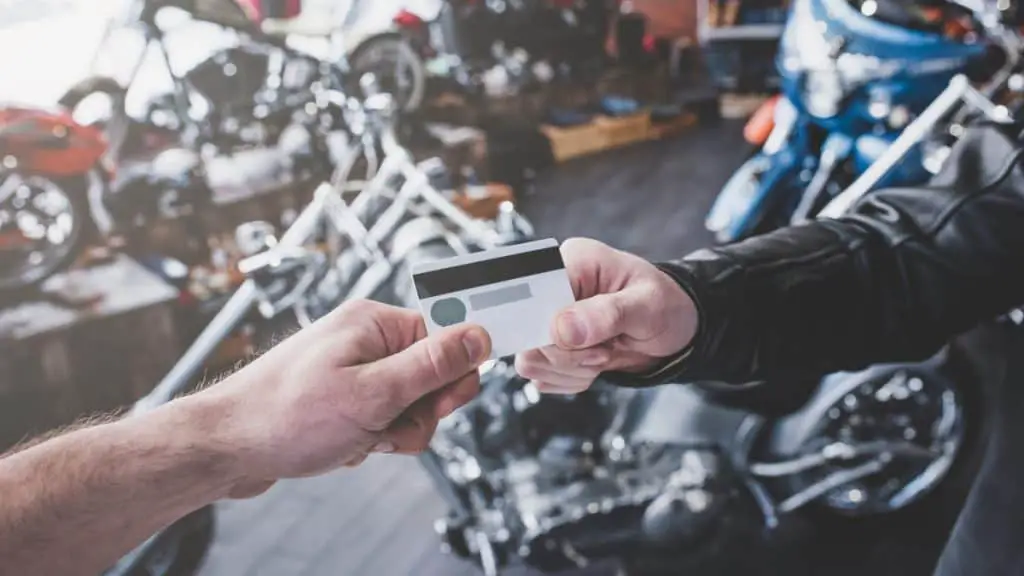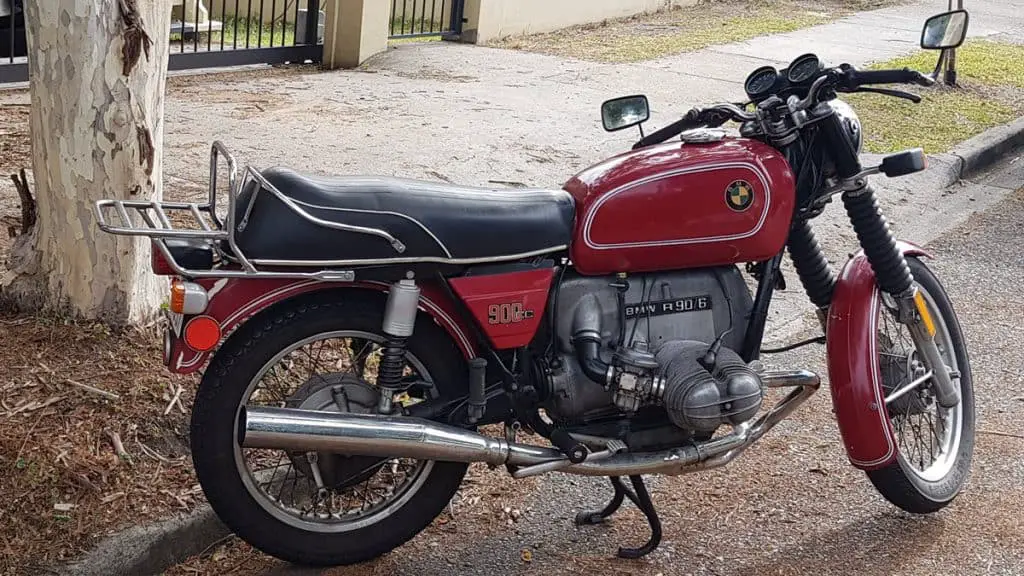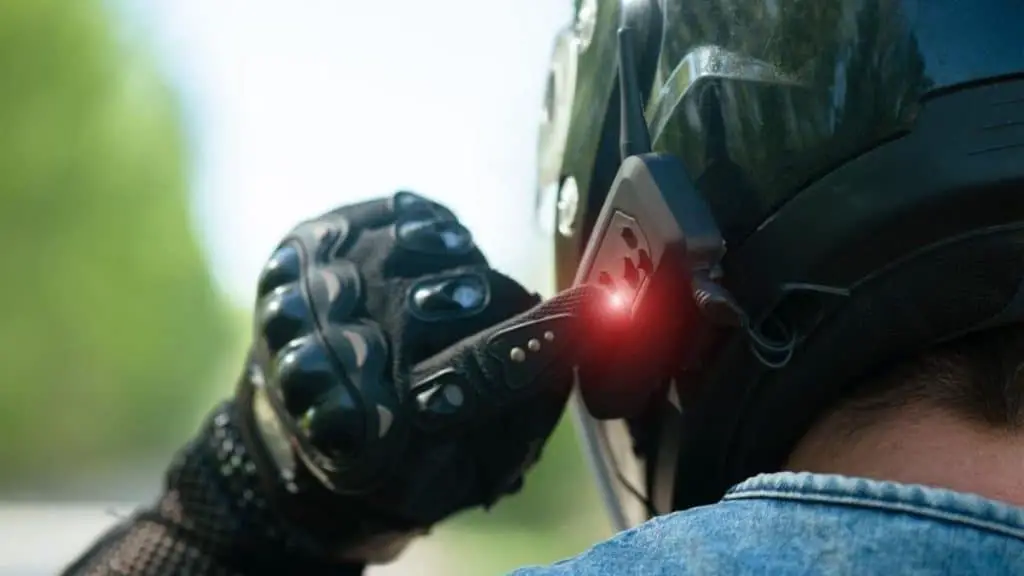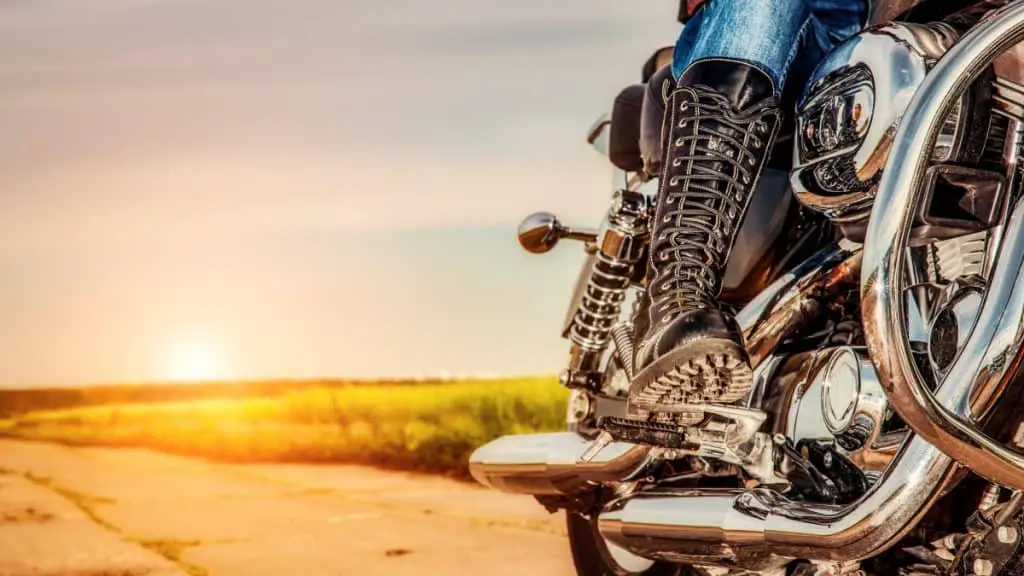Bleeding Motorcycle ABS Brakes – All You Need to Know From A to Z
So you’re looking to DIY bleed your motorcycle ABS brakes?
Here’s what you need:
Seems easy enough, right?
So how different is bleeding ABS brakes compared to other non-ABS motorcycle brakes? Are there any hidden risks that you’re not aware of?
Read below to also learn about the tell-tale signs you need some bleedin’, plus how to DIY it!
How Bleeding Motorcycle ABS Brakes Is Different From the Regular Ones?
Ask this question of any old-school rider and here’s what they’ll probably say:
“Bleed it like you would any other motorcycle brakes without ABS. Brake fluid will go through the ABS unit, and you’ll have a strong brake lever in no time!”
And they are right.
But only PARTIALLY!
We all learned how to bleed motorcycle brakes from Ari at Revzilla, now MC Garage. It’s a straightforward process. Pour, open, squeeze, and so on.
You know the jam. We all did it.
But the main difference with bleeding motorcycle ABS brakes compared to the regular ones is the approach.
Here, it’s crucial to know how ABS brakes on a motorcycle work compared to regular ones.
More brake pipes through which the brake fluid needs to go = more brake fluid. Simple math.
But there’s a flip side to that coin too. ABS and trapped air bubbles inside its pump and solenoids = a ticking death trap for you.
So that begs the question: How do you get air bubbles out of the ABS unit and out of your motorcycle’s braking system?
Air bubbles don’t like to go down. So pushing them the “good old” way, you risk getting them trapped inside the ABS. A big no-no.
So why not use gravity and flip the process?
Reverse brake bleeding is your motorcycle’s ABS salvation!
Instead of pushing the brake fluid down through the master cylinder, you’re forcing it from the brake caliper upwards.
Here’s how it is done, the right way.
Should You Bleed Motorcycle ABS Brakes Yourself?
I’m all for DIY. It’s a great way to learn stuff. Even if it means doing it the “good old” way.
But bleeding motorcycle ABS brakes might need a little bit more than “pumping your caliper with a fluid-filled syringe.”
Some manufacturers are building ABS units in their own mysterious ways, putting tiny separate brake-fluid reservoirs into circuit reservoirs.
Since you want a fresh new brake fluid everywhere, that means you need to flush those ABS circuit reservoirs as well.
There are a couple of ways to do it:
- Taking half of your bike apart and finding those dedicated bleeding valves for those circuit reservoirs, on the ABS unit.
- Getting yourself a vacuum brake bleeder or a pressure brake bleeder. (From the experience, a vacuum bleeder might be the most effective tool to flush your brakes in no time, besides reverse bleeding. But don’t forget to use teflon tape on the bleeder valve.)
- Cycling the ABS pump. Depends on how the ABS unit is built.
The first two you can DIY. Heck, I’ve done it dozens of times!
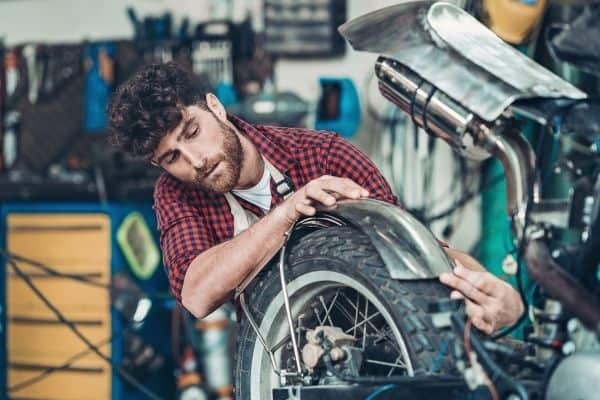
Sure, it will cost you some time and a bit of money. But look at the contrary – more gas money for you and less into the rip-off dealerships, right?
For you BMW riders out there, it’s a bit different, so here is a PDF manual on how to successfully bleed your motorcycle ABS brakes, including the ABS circuit reservoirs.
Don’t ask me how I got it. 🤐
(Had to bust into a local BMW dealership, hack into BMW manufacturer’s cloud mainframe, pretend I’m a hacker, copy the file from the ABS manuals into my secret USB drive and get out of there in less than 5 min.)
A mission impossible! But I pulled it off. 😎
Anyhow, cycling ABS unit and its pump is a whole different story. That’s a real mission impossible if you don’t have the right tools with you.
Cycling ABS means that the ABS pump has to be attached to the special scanning tool for running a brake-bleed routine. Tech for cycling ABS isn’t affordable to the general public. And the worst part is only dealerships have those kinds of “advanced” tech.
Or do they?
Today, there is an aftermarket for literally everything. So, there are also aftermarket motorcycle ABS scanning tools that you could buy.
Why waste $400, $500, or even more on a 5 min job at the dealership?
You can get the “thingy” yourself, follow the simple instructions on the screen, press a couple of buttons, squeeze the brake levers a couple of times, hear the ABS pump buzz, and…
VOILA!
The ABS pump is cycled, and now you have a braking system purged from air bubbles.
Should You Bleed Harley Davidson ABS Brakes on Your Own?
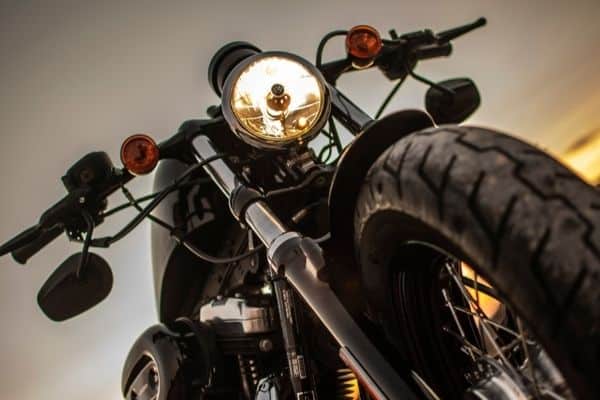
HD is old-fashioned. We all know that!
So, bleeding ABS brakes on HD bikes should be a “stroll in the park”?
Not quite.
The thing is, Harley Davidson has a CAN-bus system. It’s a communication system that enables HD’s onboard computer to communicate with your ABS unit, EFI unit, throttle input, and other sensors.
Why am I telling you all this?
To cycle the ABS unit on your Harley Davidson, you need a scan tool that supports the CAN bus system.
It’s an essential piece of the puzzle!
If you have a late Harley Davidson model like Softail, Dyna, or Sportster (back when Sportster was a Sporster) you’ll need a scanning tool that supports the CAN-bus system.
Luckily, you can get an aftermarket scanning tool supporting this kind of communication.
Recently, Harley Davidson has changed the game.
On newer models, HD is using an SAE J1850 data bus communication system. It’s just like the old-fashioned CAN-bus, but faster and much more reliable.
Remember the J1850!
A lot of Harley dealerships have motorcycle diagnostics tools that support this type of communication.
And the price they charge for pressing a couple of buttons on those tools isn’t tiny, at all!
Daytona Twin Tec is the only company in the US that sells low-cost motorcycle diagnostics and code scanning tools.
Their Twin Scan II supports all crucial communication systems on most Harley Davidson bikes, including J1850.
However, If you only want to fully flush ABS brakes on your Harley, there is an Android custom app that lets you do precisely that.
If you have a V-Rod, the year doesn’t matter, you’ll find this a bargain.
We all know that a “regular” maintenance check on a V-Rod costs half a kidney.
ITM HD1 ABS Flush Utility is low-cost in the pure essence of the word. Using it only once on your V-Rod or on any Harley Davidson motorcycle will pay off big time!
The Risks of DIY Bleeding ABS Brakes (+ How to Lower Them)
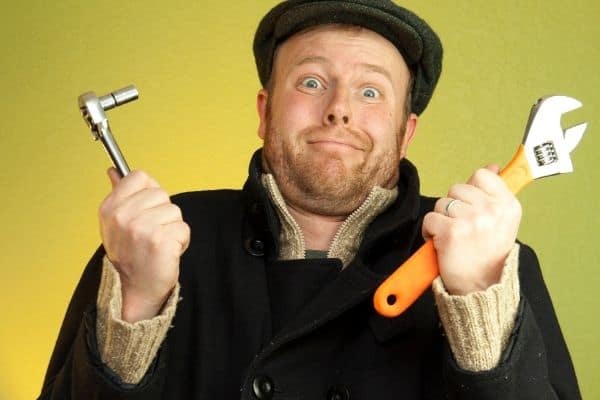
The risks are few but BIG:
- Trapping tiny air bubbles inside ABS pump and solenoids.
- Accidentally erasing or modifying motorcycle’s ECU codes when working with a scanning tool.
- Getting the infamous “frozen brakes”.
If you fell into the trap #2, you can kiss your motorcycle goodbye! At that point, it’s cheaper to buy a new bike rather than go through a hell of reuploading them.
So how do you prevent or lower all those risks? Except for the risk #2.
There are three things you need to do after bleeding your ABS brakes with fresh fluid.
1. Go for a Couple of Spins…
… and try to initiate the ABS on both of your wheels. What that does is move the brake fluid through the solenoids and forces the air bubbles out of the ABS module.
2. Zip-Tie the Brake Levers
I know, it’s so simple, yet so effective. When you zip-tie your brakes leave them for the night. The pressure from the constantly squeezed lever will move the air bubbles from the ABS into the fluid “pot”.
In the morning, you’ll have stronger brake levers than those in MotoGP.
Well, almost.
3. Get That ABS Working
If ABS doesn’t activate with time, you’re bound to get “frozen” brakes.
This one I always see happening to newer riders.
When you flush your ABS brakes, and the lever is strong, air bubbles are gone, you think you’re good to go.
But in the long run, you’re NOT!
It’s when solenoids sit still and deteriorate in the brake fluid. So, they get stuck.
As a rule of thumb, when in a safe, empty parking lot, get that ABS working as much as you can. Emphasis on the safe part!
Tell-Tale Signs of When You Should Bleed Motorcycle ABS Brakes
Bleeding motorcycle ABS unit should always be a kind of life insurance. Not for the motorcycle, per se, but you.
So, when should you bleed motorcycle ABS brakes and keep everything safe?
Besides a scheduled brake bleeding, these are the tell-tale signs those ABS brakes have to be bled, ASAP:
- Your brake lever has a funny feeling. One day it’s strong, another all squishy. Except on Tuesdays! Then I don’t blame it. Forget Mondays, Tuesdays are the new worst.
- ABS light starts to blink on its own. Without touching the brake levers the ABS light is going on/off is the moment you need to worry. An ABS unit is an expensive piece of motorcycle equipment and if it breaks you’re in some hot water. In this case, it’s better to “quickly’ bleed the whole system and check if it’ll behave fuzzy again.
- Brake pads are braking on their own or braking in periods. This is a clear indicator that something is going on with the solenoids or even the ABS pump itself. Bleed those brakes, but this time, it’s wise to have a scanning tool just to really know what’s up.
How Bleeding Motorcycle ABS Brakes Is Done the Right Way
Reverse bleeding motorcycle ABS brakes is one of the ways some dealerships will do the job.
But what actually happens behind the curtains, when you roll your bike at the dealership and get your ABS brakes bled?
This 👇
The process is always the same. No matter if it’s a Harley, Honda, Yamaha or even Moto Guzzi. (Yup, they still exist!)
So, if they could do it, why couldn’t you?
Let’s Rewind
When bleeding ABS brakes on a motorcycle, gravity is your best friend! Use it by doing a reverse bleeding process on your brakes. Or simply getting one of those fancy scanning tools that’ll finish the job in a flash.
And don’t forget about those risks! I didn’t write them without a reason.
Print them out and keep them like the pocket Bible in your left chest pocket!
Frequently Asked Questions
Do I need to go to the dealer to flush motorcycle ABS brakes?
Ask yourself this question. What is your “risk” appetite and would you spend some time and effort rather than take the risk of frozen brakes or, even worse, trapped air bubbles?
If the answer is yes, you don’t need to go to a dealer to flush your motorcycle ABS brakes. With some tools and know-how, you can do it yourself and save a big chunk of money.
How to bleed motorcycle ABS brakes without the scanning tool?
If your bike has a closed ABS system, meaning ABS valves are normally closed and separated from the rest of the braking circuit, there isn;t much you could do.
You would need that scanning tool to activate those valves.
If your motorcycle has an open ABS system, the ABS valves are normally opened and connected to the rest of the brake circuit, a regular reverse bleeding process would do the trick.


